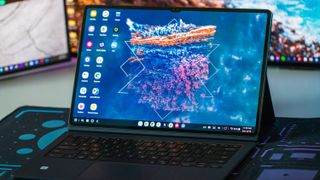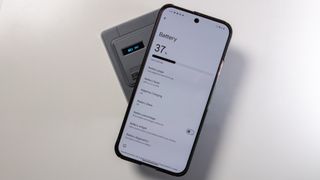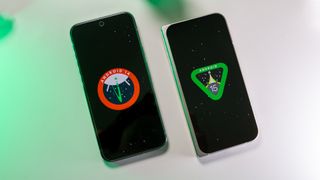After several months of testing, Android 15 made it to stable release, and the update is now rolling out to eligible Pixel devices. Google showcased dozens of new features in the beta testing phase, but like previous years, not all features made it to the stable build. Either they’re not fully ready, or Google decided to hold back features until later releases.
This was the case with the predictive back gesture, which showed up initially in the Android 13 beta but is only rolling out widely with Android 15. While Android 16 is still a few months away — the initial preview builds should go live at the end of February 2025 — we know a decent amount about the next version of Android.

Which devices will get Android 16?
(Image credit: Harish Jonnalagadda / Android Central)
Android 16 will make its way to more devices than just about any other Android version. With most brands now offering at least three Android OS updates to their budget and mid-range phones, Android 16 will be available to most devices launched in the last two years. Budget phones have been ignored for far too long, and the fact that they will get long-term updates is a big deal.
When it comes to Google’s own devices, all Pixels starting with the Pixel 7 series will be able to switch to Android 16. That leaves out the Pixel 6, 6 Pro, and all older Pixels, but these devices will continue to get feature updates and security patches. With Google now guaranteeing seven years of software updates — even on the mid-range Pixel 8a — updates aren’t going to be a problem in the future.
What is Android 16’s internal codename?

(Image credit: Harish Jonnalagadda / Android Central)
Google used dessert names with Android versions in the past, and while it doesn’t do so any longer — that ended with Android 10 — it still maintains internal codenames. Android 15 was Vanilla Ice Cream, and with Android 16, you’d assume Google to go with a dessert that starts with the letter W, like waffle.
Instead, Android 16 has an internal codename dubbed Baklava. Google is changing how it’s assigning the codenames for Android releases, and while it’s still maintaining dessert-based monikers, it effectively started over.
New features coming to Android 16
Notification cooldown turns down the noise

(Image credit: Harish Jonnalagadda / Android Central)
Notification cooldown is a great new feature that lowers the volume of incoming notifications when you get successive notifications from within the same app. So if you’re in a group chat and start getting constant notifications, your phone automatically lowers the volume of subsequent notifications.
What’s great is that you can select this setting for just conversations, or all apps. As someone who doesn’t like getting many notification alerts (I use DND most of the day), this is a great new addition, and one that I will use to good effect.
An actual desktop mode

Samsung has DeX mode on its high-end devices, but the brand is an outlier in this regard, and most Android devices don’t have a desktop mode. That may change with Android 16; later Android 15 beta builds had a desktop mode with app windows, and while it isn’t available in the stable build, it’s clear that Google is working on enabling a desktop mode in Android.
Samsung’s feature is still much better; the brand has been tweaking DeX for nearly half a decade now, and it is a mature platform. That said, I’m very excited to see a native desktop mode make its way to Android 16.
Limit charging to 80%

(Image credit: Andrew Myrick / Android Central)
This feature was available in the Android 15 beta, but there’s no mention of it in the stable release. The charging optimization mode is in the Android 15 QPR1 build, so Google will likely roll it out with that update, or push it to the wider Android 16 release.
As the name suggests, the feature allows you to limit the battery to 80%, prolonging its longevity considerably. While a few manufacturers have this feature in their own skin, it makes to see it baked into Android natively.
Audio sharing should be easier in Android 16

(Image credit: Apoorva Bhardwaj / Android Central)
Another new feature that showed up in initial Android 15 betas but isn’t available in the stable release is the ability to cast music to several Bluetooth devices at the same time. The Audio sharing sub-menu is located within the Connected devices page, and it lets you cast music to more than one Bluetooth device at a time. I really wanted to see this feature in Android 15, but given how buggy it was, it’s clear that Google is pushing it to next year.
Android 16 is coming soon

(Image credit: Andrew Myrick / Android Central)
We don’t have to wait too long to get an initial preview into Android 16. Google usually rolls out a dev preview in Q1, and while the early builds are buggy and don’t have much in the way of new features, they act as the foundation for further testing.
Google hasn’t changed its beta program in nearly a decade, and that’s unlikely to be the case next year. That means we should get the public beta builds around May, with a stable release in Q4. Of course, this is all conjecture at this point, and we will know more once Google starts rolling out preview builds of Android 16.




GIPHY App Key not set. Please check settings